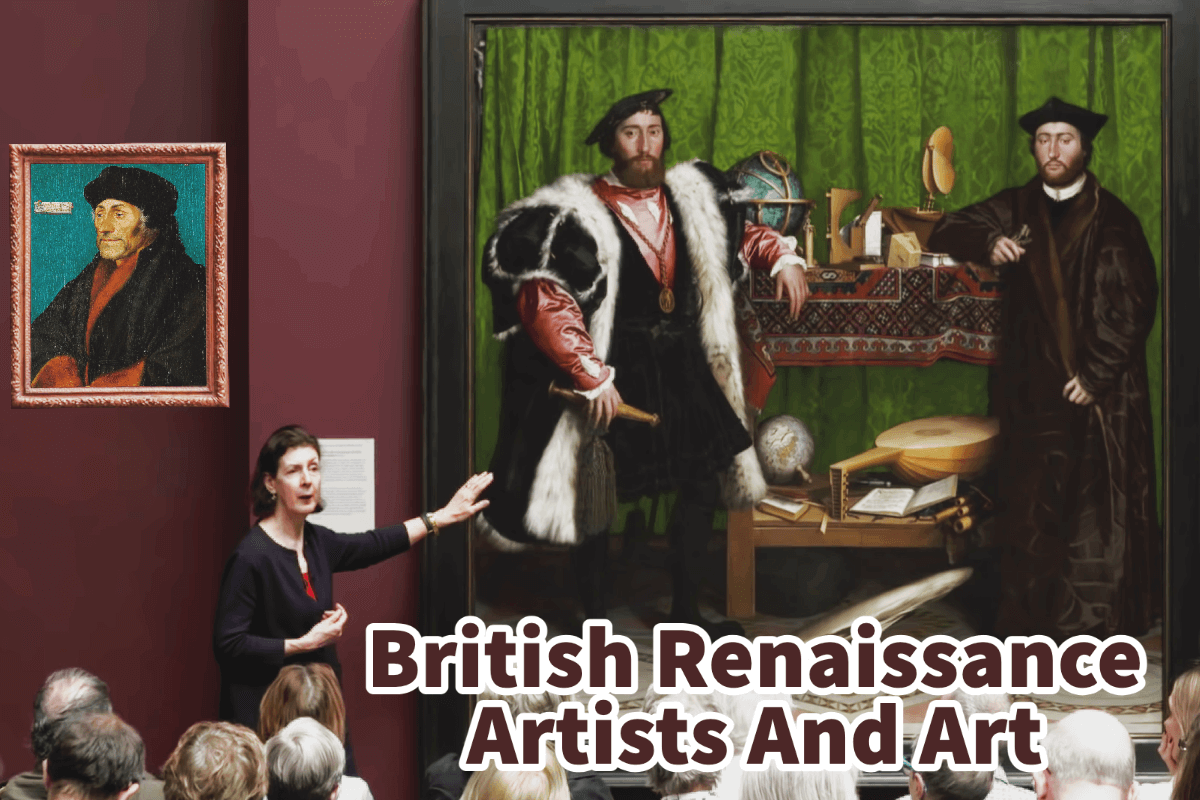When most people think of the Renaissance, they think about Italy. This is because the main movement of the Renaissance was in Italy, but the Renaissance also happened in other parts of Europe, such as Britain.
The Renaissance in Britain, known as the English Renaissance, took place from the early 16th century to the early 17th century. The British Renaissance took place later than the Italian Renaissance. During the British Renaissance, paintings were less emphasized than music and literature. One of the famous types of artwork that came out of this era was portrait miniatures. When you think about the British art of this era, most people think about portrayed miniatures. The portrait miniatures became an influential art form during the period and beyond.
Table of Contents
- British Renaissance Art
- British Renaissance Artists
- British Artists And Portrait Miniatures Painting
- Frequently Asked Questions
- Related Questions
British Renaissance Art
The British Renaissance was a cultural and artistic movement in England from the early 16 century to the early 17th century. The British Renaissance took place much later. As was the case for most of Northern Europe, England saw very little Renaissance developments until more than a century later, when the Renaissance movement came to Britain.
As was the case for most of England, the Elizabeth era, which happened in the second half of the 16th century, is usually regarded as the height of the English Renaissance. Some scholars see the Renaissance as beginning in the early 16th century or during the reign of Henry VIII.
The Renaissance style was slow to penetrate the British cities and life, so the English Renaissance was not the same as the Italian Renaissance. One of the significant differences was literature and music; these were the dominant art forms during the British Renaissance. Visual arts were much less important than during the Italian Renaissance era.
Britain was very slow to produce any art in the Renaissance style. The artists in the Tudor Court of Henry the Eighth and Elizabeth the First were mainly created by foreigners.
British Renaissance Artists
During the British Renaissance era, the English Reformation was also taking place. The Reformation occurred when the church of England broke away from the authority of the pope and the Roman Catholic Church.
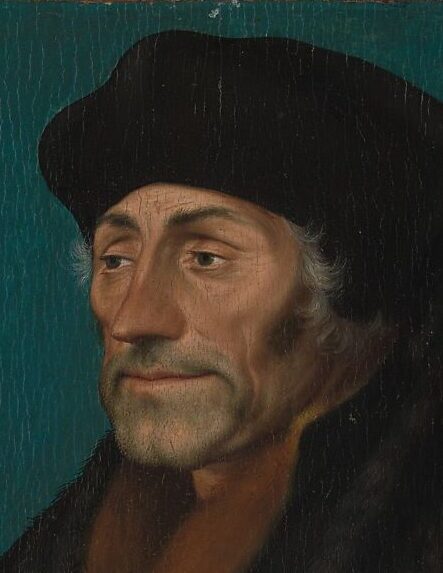
One of the critical foreign artists was the Swiss-German painter Hans Holbein, the younger. He was one of the more prominent painters to work in what was known as the English or Northern Renaissance style.
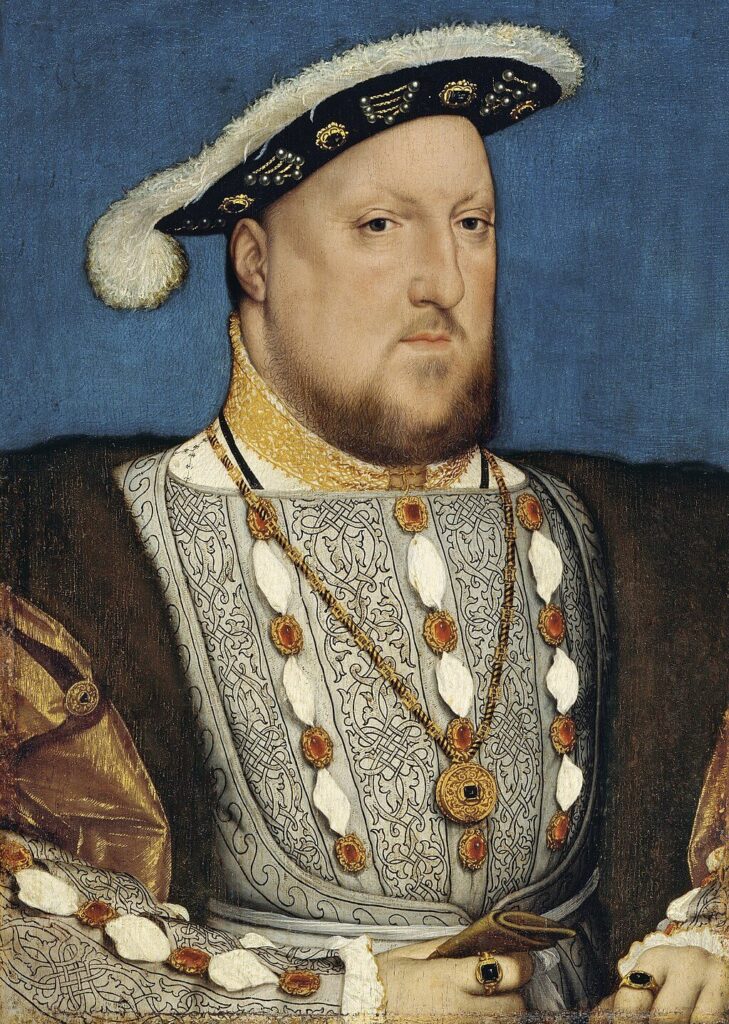
The breakaway from the Roman Catholic church also affected this period’s art and slowed the production of the English Renaissance arts. Under the reformation, iconoclasm and the social belief and importance of destroying icons, images, and monuments also came.
The iconoclasm belief destroyed almost all medieval religions because of the shift in the religion of England; this, in turn, also destroyed most medieval religious art and idols. So as not to look like they were practicing iconoclasm, the English art became dominated by portrait painting and landscapes.
British Artists And Portrait Miniatures Painting
During this era, we can credit the British with the invention of portrait miniatures. The artist essentially took the techniques of the dying art of the illuminated manuscript and transferred this to a miniature portrait that people could wear in lockets.
The illuminated manuscript was a formally prepared document where the text was often supplemented with flourishes of art and borders and miniature illustrations. The Roman Catholic Church often used these prayers, services, and psalms.
Because of the shift in the religion of England and the destruction of all medieval religious art and idols, English art became dominated by portrait painting and landscape painting. These two subject matters would dominate English art for centuries to come.
Lucas Horenbout was Flemish and first invented the technique of portrait miniatures, but the British Artist refined it.
Notable British Artists such as Nicolas Hilliard and Isaac Oliver became influential artists for portrait miniatures.
Nicholas Hilliard – English Royal Miniature Portraits
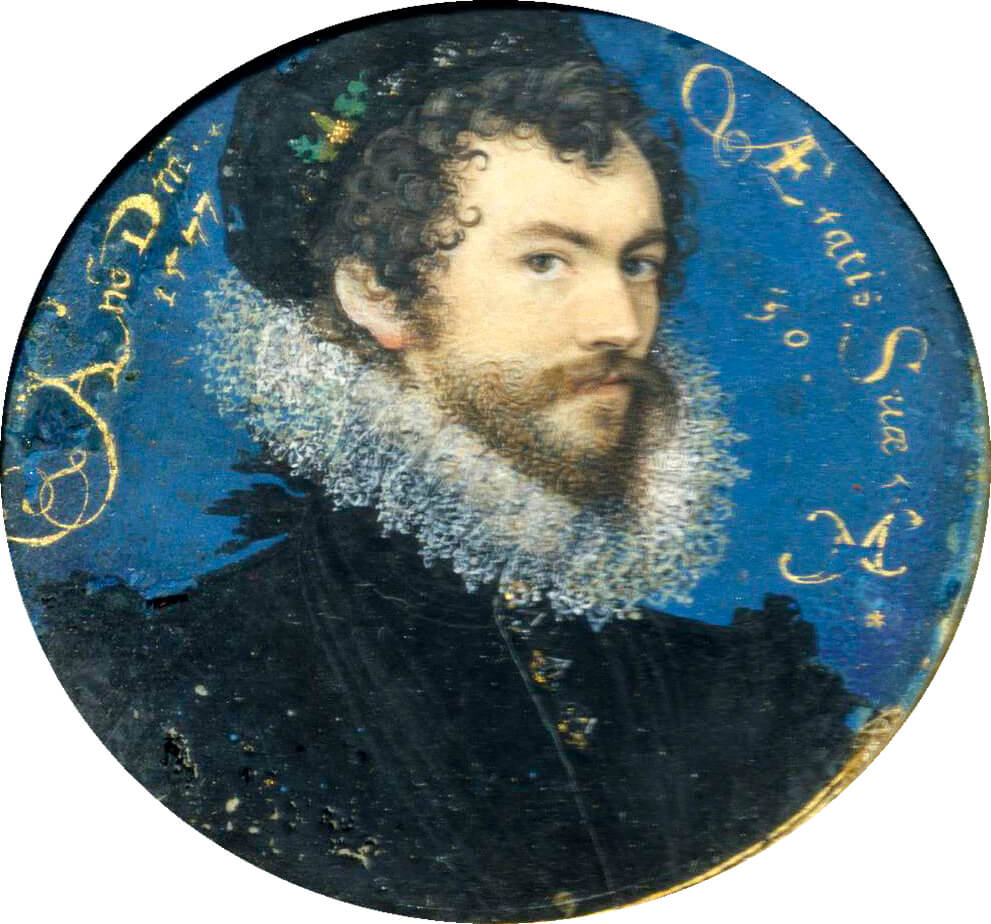
Nicholas Hilliard was born in 1547 and died in 1619. He was an English goldsmith best known for his portrait miniatures during this era.
Hilliard painted for the English Court, including Elizabeth I and James I of England. He mostly painted small oval miniatures but was also known to paint some larger cabinet miniatures up to about 10 inches or 25 centimeters tall. He did paint some panel paintings for Queen Elizabeth.
Hilliard’s paintings were excellently executed and had a freshness and charm that could not be found in other types of art in Europe. His art shows us glimpses into this time in Britain, including the Shakespearean age in England.
Issac and Peter Oliver – Father and Son Painters
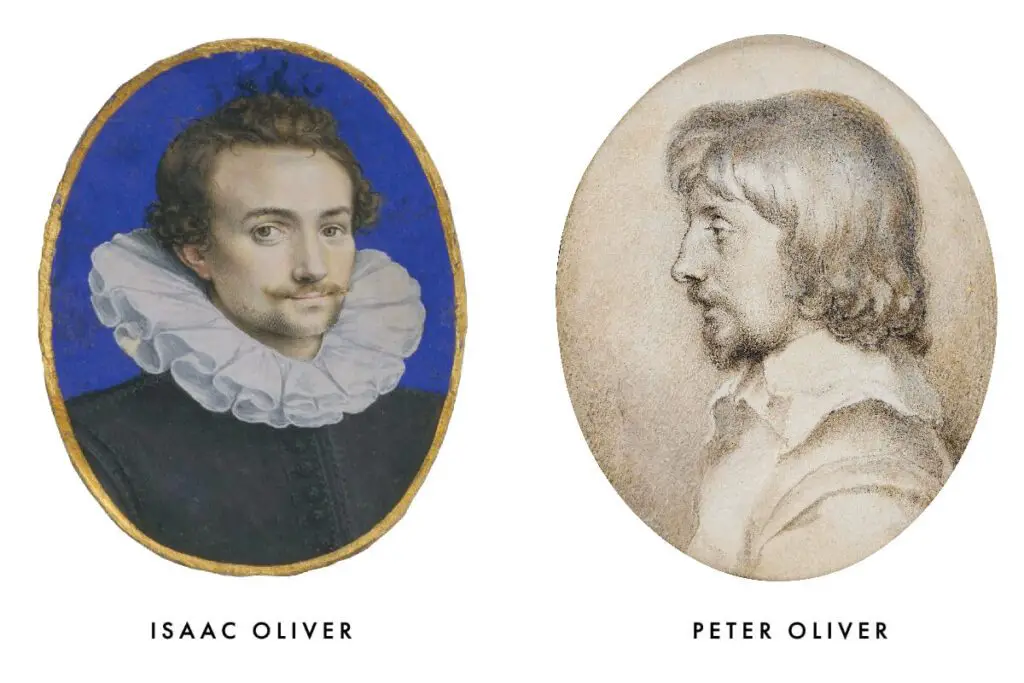
Issac Oliver was born in 1565 and died in 1617. He was born in France but moved with his parents to London.
He studied painting under Nicholas Hilliard and developed a slightly different style than Hilliard. Oliver was influenced by Italian and Flemish art.
Oliver is most known for his miniature paintings. After Elizabeth I died, he became the painter for James I’s court. Today, many of his paintings are still at Windsor Castle.
Peter Oliver, his son, also became a crucial miniature artist and painter. Peter Oliver was considered one of the greatest miniature painting artists.
Like his father, Peter also worked with the court of England, and many of his paintings today remain at Windsor Castle.
As we can see, compared to their Italian or southern European neighbors, the Renaissance in England differed significantly from the Renaissance in Italy. Today, we think of Renaissance artists mainly of those like Leonardo da Vinci, Raphael, and Michelangelo.
We learn from the British Renaissance how religion and even a change in religion as the Reformation had a lasting effect on art and the artist for centuries to come.
Anita Louise Art is dedicated to art education, great artists, and inspiring others to find and create their art. We love art that uplifts and inspires. #ArtToMakeYouSmile! #ArtToMakeYouHappy!
If you want to see any of my art, you can find out more by clicking here. If you are interested in what inspires me and my paintings, you can discover more by clicking here.
We have a free newsletter and would love you to be part of our community; you can subscribe to the newsletter by clicking here. If you have any questions, I would be happy to talk to you at any time. You can reach me, Anita, by clicking here.
Subscribe to our Anita Louise Art YouTube Channel filled with great videos and information by clicking here.
Join us for our podcast “5 Minutes With Art.” Spend just 5 minutes a week with us to discover and learn about great art and artists. You can find out more about our podcast by clicking here.
Frequently Asked Questions
What is the British Renaissance, and how does it differ from the Italian Renaissance?
The British Renaissance, also known as the English Renaissance, occurred from the early 16th century to the early 17th century. While the Italian Renaissance is more well-known, the British Renaissance had its unique characteristics, emphasizing music and literature more than paintings.
Who were some prominent British Renaissance artists, and what were their contributions to the art scene?
Notable British Renaissance artists include Hans Holbein the Younger, Nicholas Hilliard, and George Gower. They made significant contributions to the artistic landscape through portrait miniatures and other forms of art.
What role did portrait miniatures play in the British Renaissance art scene?
Portrait miniatures were a dominant art form during the British Renaissance. These small, finely detailed portraits captured the likeness of individuals and became highly influential during the era and beyond.
How did the British Renaissance differ in its emphasis on art forms compared to Italy?
While Italy focused extensively on paintings during the Renaissance, the British Renaissance placed a greater emphasis on music and literature. This distinction highlights the diverse artistic expressions across different regions of Europe during this period.
What themes and subjects were commonly depicted in British Renaissance art?
British Renaissance art often featured portraits, both in traditional paintings and in the form of portrait miniatures. Additionally, religious and mythological themes were explored, influenced by the broader European Renaissance movements.
How did the British Renaissance impact the literary and musical scenes of the time?
The British Renaissance witnessed a flourishing of literature and music. Playwrights like William Shakespeare and composers such as Thomas Tallis and William Byrd were prominent figures during this period, contributing significantly to the cultural landscape.
How did the timeline of the British Renaissance compare to that of the Italian Renaissance?
The British Renaissance occurred later than its Italian counterpart, spanning from the early 16th century to the early 17th century. This time lag allowed for the assimilation of ideas and styles from the Italian Renaissance into the British artistic milieu.
Were there any specific art movements or styles that emerged during the British Renaissance?
While not characterized by distinct art movements like the Italian Renaissance, the British Renaissance showcased a fusion of influences. Artists incorporated elements of Italian Renaissance art, Flemish techniques, and indigenous styles, resulting in a diverse and eclectic artistic output.
What impact did the British Renaissance have on the cultural and intellectual development of England?
The British Renaissance played a pivotal role in shaping the cultural and intellectual identity of England. It fostered a climate of artistic experimentation, intellectual inquiry, and cultural richness, setting the stage for the flourishing of arts and sciences in subsequent centuries.
How did the legacy of British Renaissance artists endure beyond the 17th century?
The legacy of British Renaissance artists, particularly those specializing in portrait miniatures, endured through their influence on subsequent generations of artists. The attention to detail and craftsmanship in portrait miniatures continued to inspire art movements and individual artists well into the future.
Related Questions
Greek And Rome Influence On Renaissance Art
The Renaissance, as a period of rebirth, was greatly influenced by the classical ancient art of Greece and Rome. During this period, many of these works of art were also rediscovered, which led to the discovery of realism, symmetry, and harmony in the arts. Greek and Roman art also influenced the subject matter of many of the Renaissance artists.
By clicking here, you can learn more by reading Greek And Rome Influence On Renaissance Art.
Why Was The Human Figure So Important To Renaissance Art?
The human figure was significant to the Renaissance artists; they showed the realistic human form. They understood that to show the human form adequately, they needed to study it and understand it better. The classical statues of Greece and Rome greatly influenced these Renaissance artists and their desire to depict the perfect human form. It can be said that Renaissance artists started their study of the human figure where the Greek and Roman artists left off.
By clicking here, you can learn more by reading Why Was The Human Figure So Important To Renaissance Art?.

